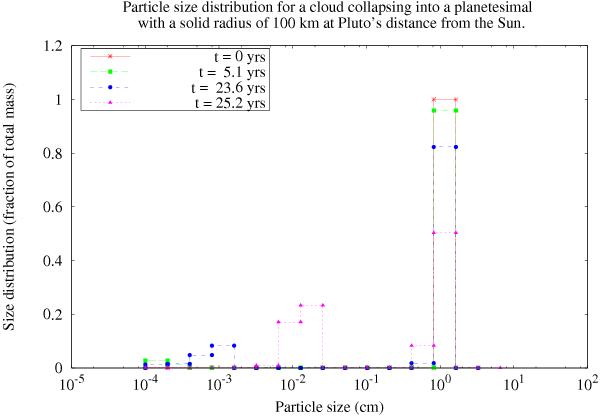Fig. 7

Particle size distribution in a collapsing pebble cloud with solid radius Rsolid = 100 km at four different times. The collision speeds are initially high enough for fragmentation to occur. Later in the collapse the particles move with subvirial speeds (see Fig. 5) and the amount of fragmentation decreases. The low collision speed in the cold collapse allow the dust to coagulate and grow to sizes of ~0.1 mm. One thing we also see in the figure is that, at the end of the collapse, a small fraction of the primordial pebbles have been subject to erosion through collisions with dust and decreased in size.
Current usage metrics show cumulative count of Article Views (full-text article views including HTML views, PDF and ePub downloads, according to the available data) and Abstracts Views on Vision4Press platform.
Data correspond to usage on the plateform after 2015. The current usage metrics is available 48-96 hours after online publication and is updated daily on week days.
Initial download of the metrics may take a while.


